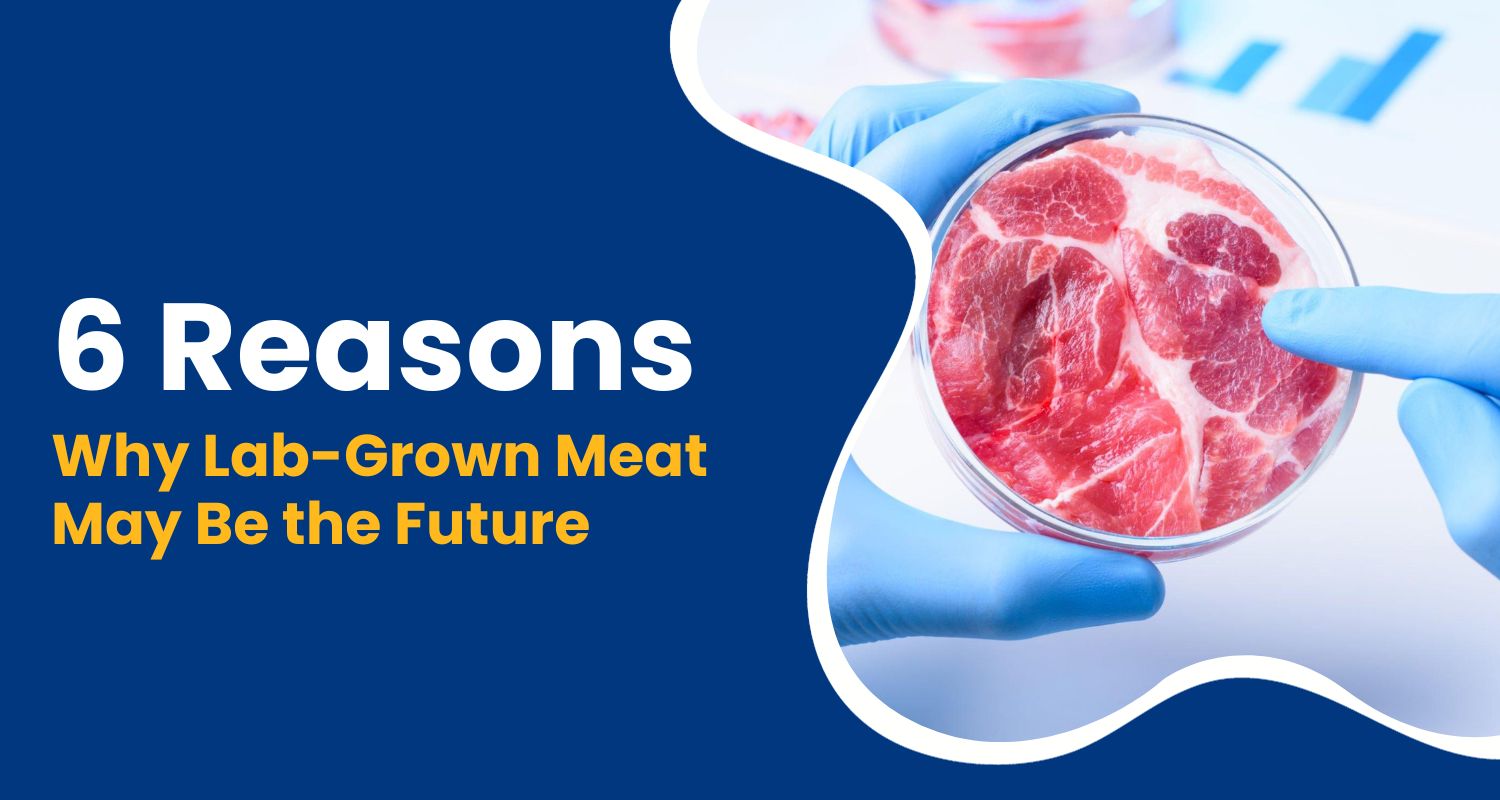In a world facing numerous environmental and ethical challenges, lab-grown meat, also known as cultivated or cultured meat, is emerging as a promising solution. Lab-grown meat, such as lab-grown chicken meat, offers a plethora of advantages that make it a viable alternative to traditional animal farming.
In this blog, we will explore 6 key benefits of lab-grown meat, highlighting its potential to revolutionize the way we produce and consume meat.
1. Lab-Grown Meat Is Sustainable Food Production
One of the most significant advantages of lab-grown meat is its potential to address the sustainability crisis that traditional livestock farming poses. The production of lab-grown meat generates significantly fewer greenhouse gas emissions compared to conventional meat production.
By cultivating meat in controlled environments, we can drastically reduce the carbon footprint associated with raising animals for slaughter. Lab-grown meat also requires fewer resources, such as water and land, in comparison to traditional livestock farming.
This is a critical factor in a world facing increasing water scarcity and deforestation concerns. By embracing lab-grown chicken and other synthetic meat options, we can reduce the strain on our environment and promote a more sustainable future.
2. Ethical Animal Welfare
The second benefit of lab-grown meat revolves around the ethical treatment of animals. Traditional meat production involves raising animals in often crowded and inhumane conditions, subjecting them to stress and cruelty. In contrast, lab-grown chicken and other synthetic meat products are created without the need for animal slaughter.
Lab meat is cultivated from a small sample of animal cells, eliminating the need to breed, raise, and slaughter animals for their meat. This not only eliminates the suffering of animals but also ensures that consumers can enjoy meat without the ethical dilemma of supporting industries that exploit and harm animals.
3. Lab-Grown Meat Reduces Health Risks
Lab-grown meat offers a solution to some of the health risks associated with consuming conventionally produced meat. Traditional meat can be a source of various health concerns, such as antibiotic residues, pathogens, and diseases that can be transmitted from animals to humans. With lab-grown meat, these risks can be minimized.
Since the production of lab-grown chicken meat, synthetic meat, and other similar products takes place in controlled and sterile environments, there is a reduced likelihood of contamination or the need for antibiotics. This translates to safer and healthier meat options for consumers, lowering the chances of foodborne illnesses and antibiotic resistance.
4. Enhanced Customization
Lab-grown meat allows for precise control of the nutritional content and taste of meat products. This level of customization is one of the key benefits that can cater to the evolving dietary preferences of consumers. By using tissue engineering and biotechnology, scientists can fine-tune the properties of lab-grown meat to match specific requirements.
For instance, lab meat can be tailored to have lower levels of saturated fats or higher protein content. It can also be designed to cater to specific dietary restrictions, such as producing kosher or halal options. The ability to customize lab-grown meat ensures that it can meet a wide range of dietary needs and preferences.
5. Lab-Grown Meat Reduces Land and Water Usage
The environmental impact of traditional livestock farming is undeniable, with extensive land use for animal grazing and feed crop cultivation. Additionally, the water required for both livestock and crop production is a significant strain on our freshwater resources. lab-grown meat presents a solution by significantly reducing these demands.
Cultivated meat requires far less land for animal rearing and feed crop cultivation. The controlled environments in which lab meat is produced also result in lower water usage. With the growing concern over resource depletion, lab-grown chicken and synthetic meat offer a more sustainable approach to meat production that can alleviate the pressures on our planet’s natural resources.
6. Food Security and Global Hunger Mitigation
Food security is a critical global concern, and lab-grown meat can play a pivotal role in addressing this issue. As the world’s population continues to grow, the demand for protein sources, including meat, is increasing. Traditional livestock farming may not be sustainable in meeting these growing needs. lab-grown meat has the potential to bridge the gap.
The controlled and efficient production of lab meat allows for more reliable and consistent meat supplies. It reduces the risks associated with factors like disease outbreaks among livestock. In regions where food security is a pressing concern, lab-grown meat can offer a stable and predictable source of protein, helping to mitigate global hunger and malnutrition.
Conclusion
Lab-grown meat, also known as cultivated or cultured meat, is a revolutionary development with numerous benefits for both consumers and the planet. From sustainability and ethical treatment of animals to reduced health risks and enhanced customization, lab meat is poised to redefine the future of food production.
The rise of lab-grown chicken meat and synthetic meat products represents a promising solution to the many challenges posed by conventional livestock farming. As we face environmental crises, ethical dilemmas, and growing concerns about resource scarcity, lab-grown meat emerges as a beacon of hope, offering a sustainable, ethical, and delicious way forward.
By embracing this innovative technology, we can reshape the future of meat production and consumption, ensuring a brighter and more sustainable tomorrow.

